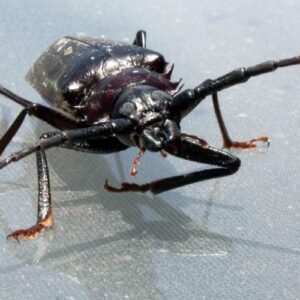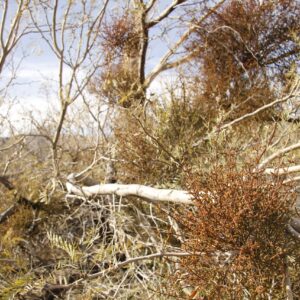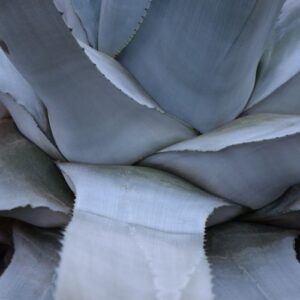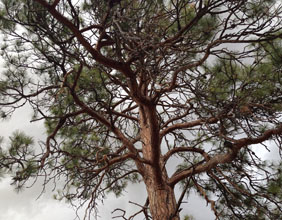
Trees in Anthem and Phoenix face countless challenges. While many homeowners understand the threat of drought or extreme heat, many don’t realize that tree diseases can cause just as much damage to their beloved shade trees.
Every region has its own tree diseases to deal with – and our area is no different. By learning some of the most common tree diseases in the Phoenix area, so you can help prevent, spot, and deal with these issues before they cause irreversible damage.
Key Takeaways:
- Phoenix’s extreme heat and monsoon conditions create perfect conditions for tree diseases to develop and spread quickly.
- Healthy trees naturally resist disease better, making proper watering and maintenance essential for preventing problems.
- Common diseases, like sooty canker and Texas root rot, can kill trees within weeks or even days of showing symptoms.
- Many tree diseases in Phoenix start in hard-to-see areas, making regular professional inspections important for catching problems early.
Understanding Our Unique Environment and Local Tree Pests
The extreme desert environment in Phoenix creates conditions where certain tree diseases can spread rapidly. During summer months, when temperatures consistently exceed 110°F, trees experience severe stress that weakens their natural defenses. This stress makes them more susceptible to disease, much like how a person under constant stress becomes more likely to get sick.
Then comes monsoon season. After months of extremely hot, dry conditions, sudden bursts of humidity create the perfect environment for fungal diseases to take hold. Trees already weakened by months of heat stress have trouble fighting off these infections.
Even healthy, well-maintained trees can succumb to disease in our harsh climate. The combination of extreme temperature swings, prolonged droughts, and intense seasonal monsoons means Phoenix area trees need ongoing attention and care to stay strong. A tree that might easily fight off disease in a more moderate climate often struggles to do so here in the Valley.
Common Phoenix Tree Diseases to Watch For
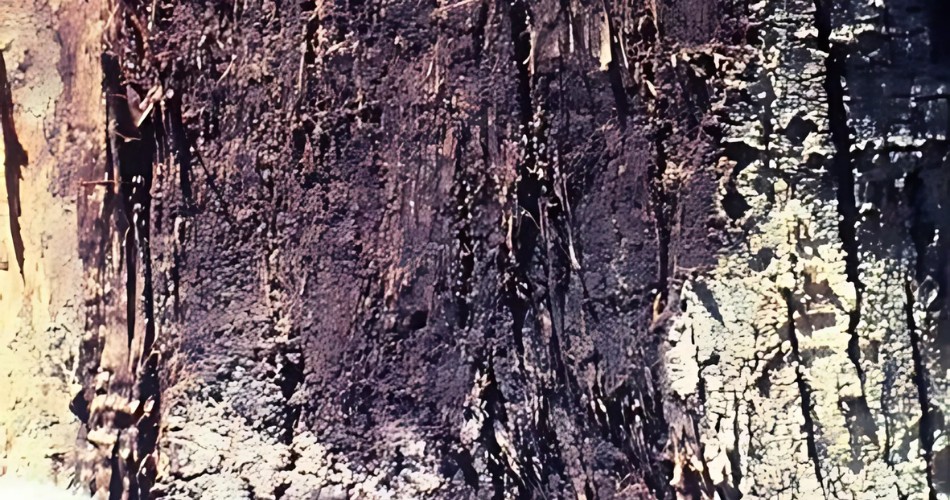
Photo courtesy of William Jacobi, Colorado State University, Bugwood.org
Sooty Canker Disease
One of the most destructive diseases affecting Phoenix area trees is sooty canker. This fungal disease thrives in our hot climate, particularly targeting:
- Desert willows
- Mulberry trees
- Palo verdes
This airborne disease typically enters through wounds in the bark, often caused by improper pruning or storm damage. Once established, sooty canker can kill branches or entire trees within a single growing season, making early detection essential.
Common signs of sooty canker infection include:
- Dark, sunken areas on branches or trunks
- Cracked bark revealing black, powdery spores
- Sudden wilting of seemingly healthy branches
- Brown leaves that remain attached to dead branches
- Rapid decline starting in the upper canopy
Prevention is key with sooty canker, as there’s no effective treatment once it takes hold. Ensure pruning is done properly – with sharp, clean tools, and cuts made just outside the branch collar.
Make sure to avoid trunk and branch injuries. And focus on regular tree health through proper watering to minimize the chances of trees falling victim to sooty canker disease.
Texas Root Rot
Texas root rot (or cotton root rot) is probably the most serious threat to desert trees in Arizona, particularly those planted in yards with heavy clay soil or poor drainage. This soil borne fungus attacks tree roots during the warm, wet conditions of monsoon season, often leading to sudden and dramatic tree failure.
Common trees affected by Texas root rot include:
- Olive trees
- Citrus trees
- Chinese elms
- Ash trees
What makes this disease particularly dangerous is its ability to persist in soil for years. The disease tends to spread in circular patterns throughout landscapes, taking advantage of irrigation systems to move from tree to tree. And since there’s no cure once a tree is infected, prevention becomes especially important.
Signs of Texas root rot include:
- Sudden wilting of leaves across the entire tree
- Rapid browning of foliage
- Complete tree collapse within days of first symptoms
- Bronze or brown leaves remaining attached to branches
- Rotted roots that appear dark and soft
Once the signs of Texas root rot are visible above ground, the entire root system has likely been affected, making it near impossible to save the tree.
Property owners who have lost trees to Texas root rot should be especially careful about replanting in the same location. The fungus can remain active in soil for decades, making it risky to plant susceptible species in affected areas. Consider working with an arborist to select resistant tree species or explore treatment options for contaminated soil. Palms are among the few species that are immune.

Photo courtesy of John Hartman, University of Kentucky, Bugwood.org
Fire Blight
Fire blight is a destructive bacterial disease that affects trees in the rose family (fruit and ornamental trees). During spring, when temperatures rise and humidity increases, the bacteria become active and can spread rapidly through a tree’s vascular system.
Most commonly affected trees include:
- Apple trees
- Pear trees
- Pyracantha
- Indian hawthorn
- Flowering quince
The name, “fire blight,” comes from the scorched appearance of infected branches, making trees look as if they’ve been burned by fire. The disease often enters through flowers during bloom time, but can also infiltrate through wounds or natural openings in bark.
Signs of a fire blight infection include:
- Branch tips that curl into a distinctive “shepherd’s hook”
- Blackened leaves that remain attached to branches
- Dark, sunken cankers on branches and trunk
- Oozing bacterial liquid from infected areas
- Dead blossoms that turn black and stick to branches
Quick removal of infected branches is essential to prevent the disease from spreading throughout the tree and to nearby susceptible plants. Proper pruning tools and techniques are important, as the bacteria can easily spread through contaminated equipment. Use a bleach solution in between cuts when pruning infected branches.
You can avoid this disease by focusing your planting efforts on native trees. Otherwise, disease-resistant varieties may be available.
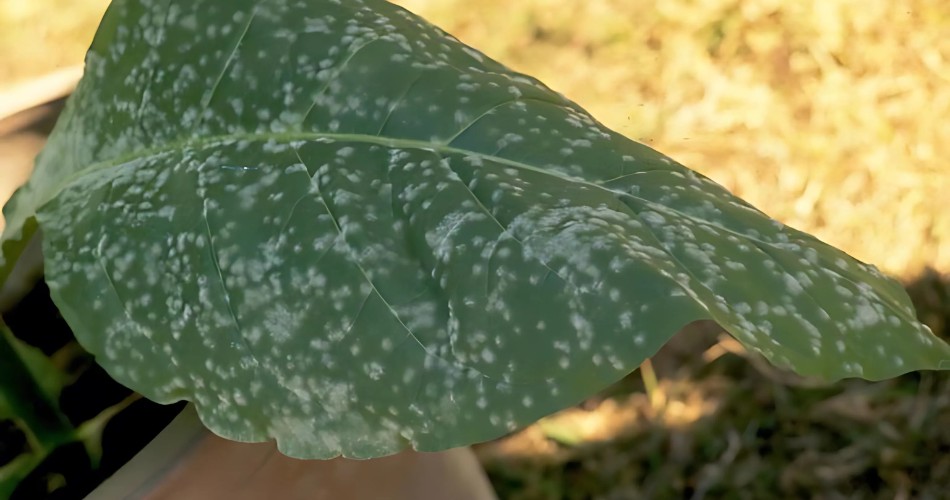
Photo courtesy of William M. Brown Jr., Bugwood.org
Powdery Mildew
Despite Phoenix’s typically dry climate, powdery mildew becomes a significant problem during periods of high humidity, particularly during monsoon season. This fungal disease affects a wide variety of trees and is especially common in shaded areas with poor air circulation, such as dense trees or those planted in tight spaces between buildings.
Trees commonly affected by powdery mildew include:
- Crape myrtle
- Eucalyptus
- Chinese elm
- Desert willow
- Catalpa
While rarely fatal to mature trees, powdery mildew can impact a tree’s appearance and overall vigor. The disease typically starts on new growth, making it more concerning for young trees and fresh spring foliage.
Signs of powdery mildew include:
- White, powdery coating on leaves and shoots
- Distorted or stunted new growth
- Yellowing leaves that may drop prematurely
- Reduced flowering or fruit production
- Brown or black spots on heavily infected leaves
Unlike many tree diseases, powdery mildew can often be controlled with a few practical tips. You can improve air circulation by pruning dense areas and keep trees dry by avoiding overhead watering (water the roots, instead). During monsoon season, extra vigilance is needed as the disease can spread rapidly under favorable conditions.
Preventing Tree Diseases with Proper Tree Care
Preventing tree diseases in Phoenix involves ongoing tree care. Healthy trees naturally resist disease better than stressed ones, making proper tree care the first line of defense against infection.
The most important things you can do at home include:
- Proper watering based on tree species and season: Deep, infrequent watering helps develop strong root systems that better resist disease. Too little water weakens trees, while too much can promote root rot and fungal growth.
- Applying organic mulch: Helps protect and insulate tree roots while maintaining moisture levels.
- Maintaining good soil drainage: Prevents excess moisture buildup, reducing the risk of fungal infections.
- Proper pruning techniques and timing: Always use clean, sharp tools to prevent disease spread and promote healthy growth.
- Avoiding damage to trunks and roots: Tree injuries create entry points for disease and pests. Be mindful when landscaping or using equipment near trees.
- Scheduling regular inspections: Catching early signs of diseases allows for quicker intervention and treatment.
FAQs About Phoenix Area Tree Diseases
Can diseased trees be saved?
Sometimes, yes, but it depends on the tree, the specific diseases it’s facing, and how soon action is taken to save it. Some diseases, like powdery mildew, can often be controlled. Others, like Texas root rot, offer no cure once infection occurs. Professional diagnosis provides the best chance of saving affected trees.
What’s the best time to check trees for disease?
Regular inspections throughout the year help catch problems early. Pay special attention during seasonal changes, particularly as temperatures rise in spring and during monsoon season when humidity increases. Watch for unusual changes in leaf color, branch dieback, or anything that looks different from the tree’s normal appearance.
Should I remove a diseased tree immediately?
The first thing you should do is call a tree care company that cares about saving trees (many just focus on pruning or tree removals, rather than disease control). Here at Titan Tree Care, we aim to save trees whenever possible, and only recommend removal if needed. Only an experienced, Certified Arborist can make that call upon inspecting the tree in person.
Get Help Protecting Your Trees from Diseases from Titan Tree Care
Tree diseases can quickly turn healthy trees into safety hazards that require expensive removal. But with proper care and attention, you can spot problems early and keep your valuable trees alive for years to come – or at least prevent diseases from spreading to other healthy trees.
If you see anything unusual happening with your trees, don’t wait and hope for the best. The Certified Arborists at Titan Tree Care can check your trees, figure out what’s wrong, and create a plan to fix the problem. Call us at 623-444-8448 or fill out our online form to schedule a free estimate today.
More Articles Like This

Titan Tree Care is a full-service tree care company located in Anthem, AZ and serving all of North Phoenix. We offer a wide range of services to meet your tree care needs, including tree and palm trimming, tree pruning, tree removal, stump grinding, and more. We also offer insect or disease treatments and fertilization services. We are dedicated to providing high-quality, safe, and effective tree care services to our customers and work hard to ensure that your trees are healthy and look their best.



